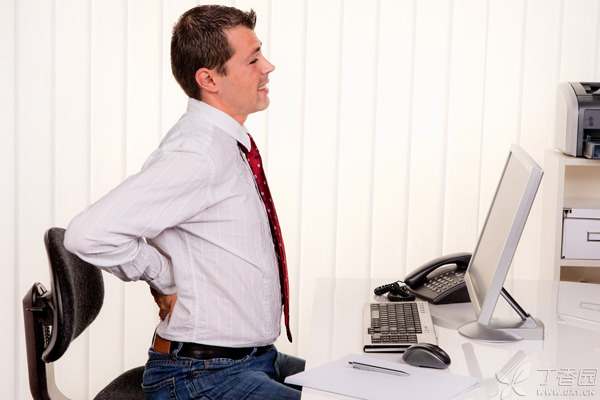
Acute low back pain refers to sudden pain in the lower back. You may also have symptoms of stiff back, reduced lower waist movement and difficulty standing up straight. Acute low back pain may last for days to weeks. Generally speaking, low back pain lasting less than three months is acute low back pain, while low back pain lasting more than three months is chronic low back pain.
Most people have had low back pain at least once in their lifetime. Although pain and discomfort can occur anywhere on the back, the most common affected area is the waist. This is because the waist supports most of your body’s weight.
Excluding urinary system diseases, the most common acute lumbar pain is caused by sudden damage to muscles and ligaments supporting the back. The latter pain may be caused by muscle spasms, strain, or tear of muscles and ligaments.
Is acute lumbago a feeling of how?
If you hurt your back, you may have a stabbing or burning sensation, a dull and dull pain, or a sharp pain. The pain may be mild or severe enough that you cannot move. It may also be painful in your legs, hips, or soles of your feet. The legs and feet may feel weak.
When you see the doctor, do you want to do some what?
When you see a doctor for the first time, you may be asked about low back pain, including the frequency and severity of low back pain.
Doctors will try their best to determine the cause of your low back pain, excluding other systemic diseases such as ureteral stones, and whether it can be quickly improved by simple means such as ice compress, mild painkillers, physiotherapy or appropriate exercise. Most of the time, low back pain will be improved by these methods.
During the physical examination, your doctor may try to find out the location of the pain and determine how it affects your actions.
Some imaging examinations, such as X-ray and CT scanning of the lower spine and MRI of the lower spine, can also help doctors determine the cause of lumbago.
Most acute lumbago can be relieved or recovered within 4-6 weeks.

The first time you feel lumbago, what should you do?
Wrong treatment methods may lead to bad results. Here are some correct methods to deal with pain:
- Stop normal physical activity for the first few days. This is helpful to relieve your symptoms and relieve edema in the painful area. Apply hot compress or ice compress to the painful area. A good way is to apply ice compress within 48-72 hours of the onset of pain. Then use a hot compress. Use over-the-counter painkillers, such as ibuprofen or paracetamol (paracetamol). When sleeping, try to curl up like a fetus and put a pillow between your legs. If you are used to sleeping on your back, put a pillow or rolled-up towel under your knees to relieve the pressure.
What are the misunderstandings of lumbago?
A common misconception about low back pain is that you need to rest and avoid activity for a long period of time. In fact, doctors do not recommend absolute bed rest. If there are no other symptoms such as runaway defecation, weakness, weight loss or fever, you should keep active as much as possible.
You may only need to reduce your activity for the first two days. Then, slowly resume your daily activity after that. For the first 6 weeks after the pain starts, don’t do some movements such as weightlifting or twisting your back. After 2-3 weeks, the exercise can be carried out gradually from small to large.
Start with moderate aerobic exercise. Walking, spinning and swimming are good examples. These exercises improve the blood flow in your back and promote recovery. They will also strengthen your abdominal and back muscles.
Stretching and intensive training are also important. However, starting these exercises too early after your injury may aggravate your pain. At this time, it is recommended to consult a rehabilitation physician, who can help you plan to start stretching and intensive training in what and how to do it.
How to prevent lumbago?
- Avoid standing for long periods of time. If you have to stand because of your work, Rest your feet alternately on the stool. Don’t wear high heels. Use cushioning soles when walking. When sitting and working, Especially when using computers, Be sure to choose a straight back and adjustable seat and chair with backrest, armrests and rotation. Place a stool under your feet. Keep your knees above your hips while sitting. Put a small pillow or rolled towel under your back when you are sitting for a long time or driving. If you want to drive a long-distance bus, It is recommended to stop the car every hour and take a walk outside the car. Lean your seat forward as far as possible to avoid bending over. Don’t lift weights after long cycling. Quit smoking. Lose weight. Regular exercise to strengthen your abdominal muscles. This will strengthen your core muscle groups and reduce the risk of injury.
Responsible Editor: Ji Lingyan
